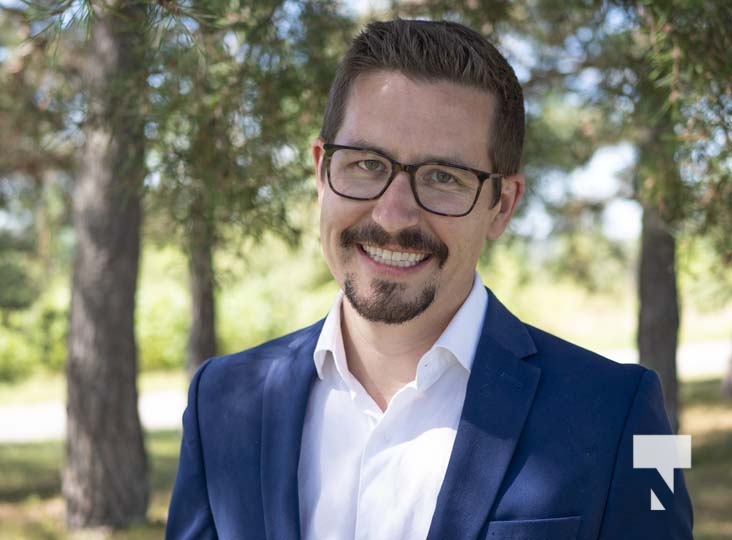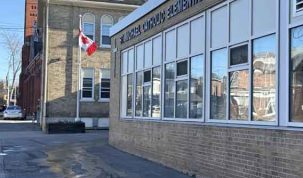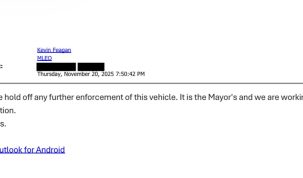By Cecilia Nasmith/Northumberland 89.7 FM/Today’s Northumberland
The merger that took effect Jan. 1 to produce the Haliburton Kawartha Northumberland Peterborough Health Unit (from Peterborough Public Health and the Haliburton Kawartha Pine Ridge District Health Unit) will not result in the closing of any regional offices.
And at some point, the new name might be changed.
As the combined unit’s new Medical Officer of Health and Chief Executive Officer Dr. Thomas Piggott said at a media scrum Monday, the new name is place holder.
“We are searching for a business name that will be easier to roll off the tongue and be reflective of the communities we serve.”
Dr. Piggott joined board chair Ron Black and vice-chair Cecil Ryall to answer questions about the new entity, and Black said that one of their hardest decisions was to choose between both former units’ MOHs to select one to head up the merged unit.
Choosing Dr. Piggott came after asking the Ministry of Health for help in making the decision. Black described the painstaking process, with interviews conducted by himself, Ryall and a ministry representative. Once the choice was made, the current provincial election meant that it must at this time be considered an acting position as it requires certain approvals from the ministry.
Named Deputy Medical Officer of Health, Dr. Natalie Bocking from the former HKPR unit is ideally situated as the second public-health physician that is needed in the new organization. This is a typical position for health units when they serve populations of 250,00 or more, and the combined population covered by the new health unit exceeds 300,000.
Dr. Piggott moved here from Labrador three years ago with his wife (a family doctor) to be closer to family in Peterborough County and to the family cottage near Minden. Career accomplishments include work in public health in Canada and service in Africa with Doctors Without Borders. He remains involved in teaching and research (including a current project on long COVID).
“It has been a huge privilege to get to work with Dr. Bocking through the journey, the relationships that have been formed and the good will,” Dr. Piggott said.
“This has been a voluntary process, We had two leaders come together, two boards come together, and elect to do this because we thought we could create something better together.
“I have the utmost respect for Dr. Bocking as a leader who has built really great relationships in the community she has served for the past few years.”
Black said that a second public-health physician is vital to the organization.
“Both Dr. Piggott and Dr. Bocking have a wealth of knowledge about their individual organizations,” he stated.
“For a merger to be successful, we need that legacy knowledge of the geography, of how things have operated, where we do things better. We need to learn from each other – that legacy knowledge is hugely important to the board and to the organization as we move forward.”
As one who has worked with several mergers – business and municipal – Black said, “we have an amazing team from both legacy health units, and a strong board of health that is 16 members strong right now.” This includes membership from all five municipal entities as well as the Indigenous community.
It’s important to remember that the merger was voluntary, Ryall pointed out. Both partners had been through a long and devastating time dealing with the COVID-19 pandemic, and were dealing with lack of resources and lost opportunities to move forward at a time when it is necessary to comply with changes upcoming in the new Ontario Health Standards.
“That made it crystal clear at that point in time that we definitely could work together and reduce costs and bureaucracy,” he said.
“I believe we are definitely going to come up with a much more effective and cost-resilient program.”
Looking ahead, he expressed confidence that, when unique situations arise, “in-depth discussion and compromise will be the formula for success.
“We will be uncovering new areas the unified health unit will have to address, and do it in a way that makes sense within the restrictions of finance and geographics.”
Dr. Piggott expounded on his belief that the good public health does in our community now prevents costlier and more catastrophic impacts downstream, and this merger creates a health unit that is stronger and better suited for that purpose.
“The pandemic took a significant toll on our staff. The challenges we had are some of what I am really hopeful we can address through this merger to have better readiness and capacity to respond to future emergencies.”
“Already we have found hundreds of thousands of dollars in efficiencies from contracts and investments we can develop on an annual basis to make our programs and services better. I am confident we will work together to create something better for all our regions, all our geographies.”
Looking ahead, he said, “There aren’t direct public-facing changes you will see so far. Our services will change slowly and thoughtfully, deliberatively with consultation of the community. I will be moving swiftly but not hastily to help lead our teams through this journey.”
Historically, Dr. Piggott said, public health has had funding challenges, with only token budget increases or none at all, making it a struggle to meet its many obligations, ranging from ensuring schoolchildren have the appropriate vaccinations to making sure restaurants are inspected. Meanwhile, public-health needs are growing more complex.
“Certainly the funding component has always been top of mind for the merger steering committee,” Black said.
“The province committed three years of merger funding – the first year was $10.2-million for this year, which finishes March 31.”
The provincial election might change the party in power, but Black hopes this commitment will continue as it has the strong support of ministry staff.
After the province put out the call for health units to consider voluntary mergers, nine health units merged into four – and out of those four, the largest funding package went to this one. The funding support is at least partly to create models that can be an example to those health units that did not consider mergers.
“We are confident the ministry does want it to be an example that might encourage other health units to move in that direction,” he said.
“The millions of dollars we have in place already will set us up for success in the future. Both health units have been challenged, particularly through COVID, with meeting public-health standards for Ontario.
We are focusing on improving services to our residents through some of that funding and are reasonably confident, again, in knowing what the government will do well into the future.”






















